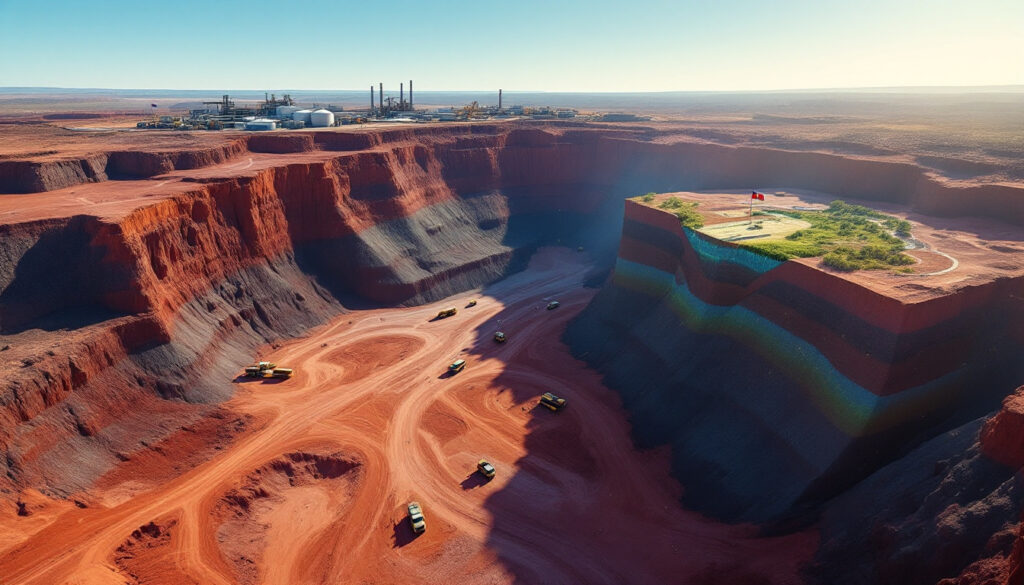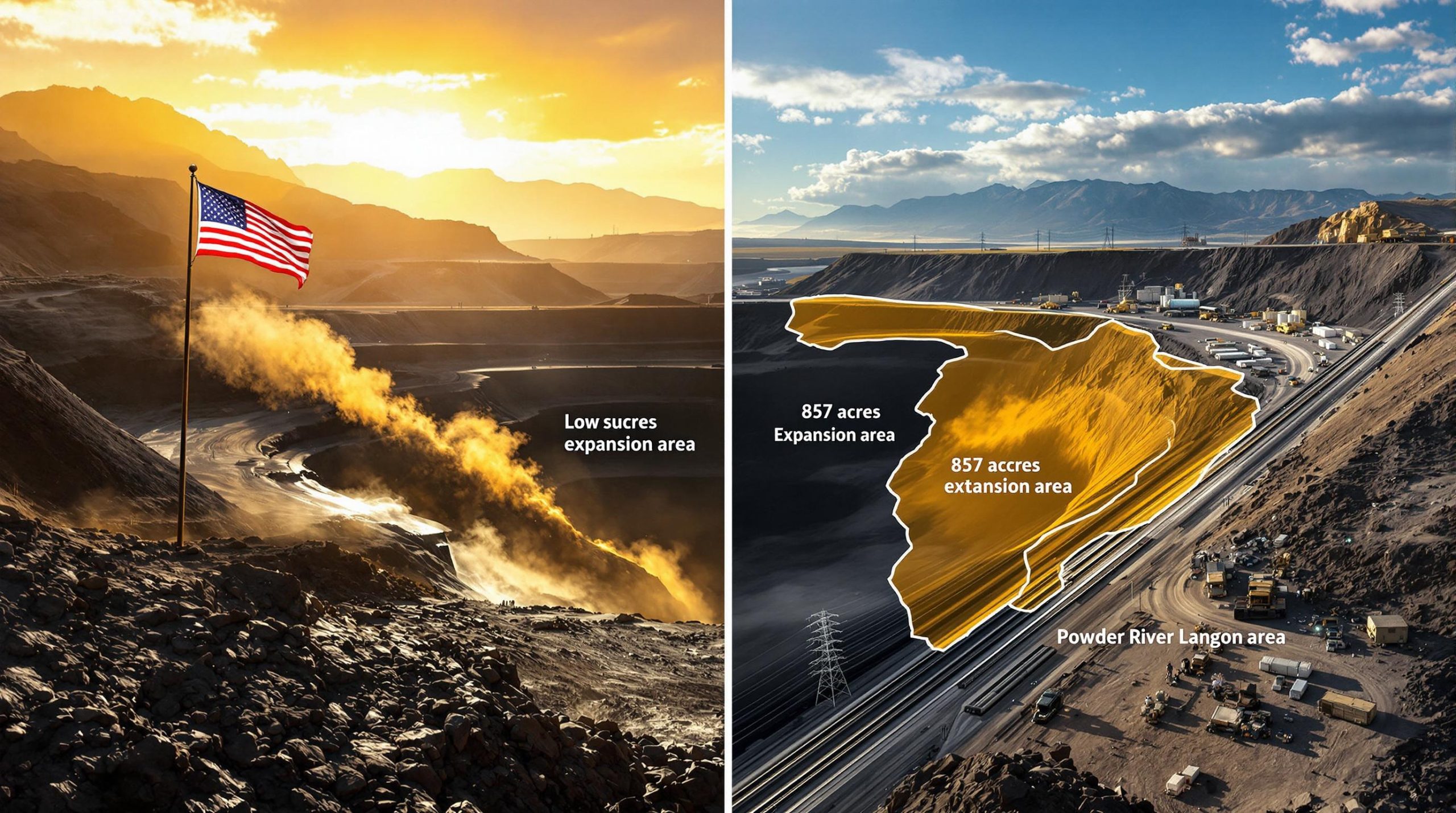What Makes Mulga Tank Australia's Largest Nickel Sulphide Deposit?
Western Mines Group's flagship Mulga Tank project in Western Australia's eastern Goldfields has firmly established itself as Australia's largest nickel sulphide deposit. The recently completed mineral resource estimate (MRE) confirms an extraordinary resource of 1.9 billion tonnes grading 0.27% nickel, positioning this discovery not just at the top of Australia's nickel hierarchy but among the world's ten largest nickel sulphide deposits.
The scale of this discovery is difficult to overstate. With 5.3 million tonnes of contained nickel metal, Mulga Tank represents a nationally significant resource that strengthens Australia's position in the global critical minerals landscape. The deposit's indicated category—considered the more reliable portion of the resource—contains 565 million tonnes at 0.28% nickel, while the inferred category comprises 1.4 billion tonnes at 0.27% nickel.
According to Western Mines Group's Managing Director Caedmon Marriott, "Mulga Tank represents a globally significant nickel sulphide deposit and is the largest in Australia. The scale and consistent nature of the mineralization make this a truly exceptional discovery with multiple development pathways."
What makes Mulga Tank particularly noteworthy is not just its size but its sulphide mineralization style, which typically allows for more straightforward processing compared to laterite deposits. The favorable sulphur-to-nickel ratio of 0.9 indicates a sulphide-dominant system, potentially simplifying future extraction and processing operations.
The Geology and Composition of Mulga Tank
Beyond its impressive nickel content, Mulga Tank hosts a suite of valuable companion metals that significantly enhance its economic potential. The resource contains approximately 257,000 tonnes of cobalt at an average grade of 131 parts per million (ppm), a critical battery metal that frequently commands premium prices due to supply constraints and growing demand.
The deposit also contains 161,000 tonnes of copper at 82 ppm and an impressive 1.1 million ounces of platinum and palladium at an average grade of 17 parts per billion (ppb). These additional metals could provide substantial by-product credits in any future mining operation, potentially improving project economics.
Geologically, Mulga Tank is situated within a large ultramafic complex, a rock type typically associated with significant nickel deposits worldwide. The mineralization style is predominantly shallow disseminated nickel sulphides, meaning the nickel minerals are distributed throughout the host rock rather than concentrated in massive zones. This style of mineralization is particularly amenable to large-scale, low-cost open-pit mining methods.
What distinguishes Mulga Tank from many other disseminated deposits is the presence of high-grade zones within the broader resource envelope. Drilling has identified numerous areas with substantially higher grades, including spectacular intercepts of up to 4.5% nickel and 4.8% cobalt. These high-grade clusters could potentially be targeted in early mining phases to enhance project economics.
The deposit remains open in multiple directions, suggesting the current 1.9 billion tonne resource could grow substantially with continued exploration. Deeper drilling has also indicated potential for massive sulphide mineralization at depth, which could represent higher-grade material for future underground mining operations.
Exploration and Development Journey
Western Mines Group has employed a methodical exploration approach at Mulga Tank, combining reverse circulation (RC) and diamond drilling techniques to progressively define and expand the resource. The current resource estimate incorporates data from 36 recent RC holes totaling 11,536 meters, alongside historical drilling information.
The exploration program has yielded remarkable results, with 23 separate intersections exceeding 1% nickel—a grade threshold that would be considered high-grade in many global nickel districts. Peak assays have reached as high as 4.5% nickel over select intervals, confirming the presence of high-grade zones within the larger disseminated system.
Dr. Caedmon Marriott explains the company's strategic approach: "Our systematic drilling program has not only confirmed the enormous scale of Mulga Tank but also identified multiple high-grade zones that could significantly enhance the economics of any future development scenario. We're particularly encouraged by the consistency of mineralization throughout the complex."
The exploration journey has benefited from modern geophysical techniques, including electromagnetic (EM) surveys designed to identify conductive sulphide bodies. These surveys have helped pinpoint drilling targets and will continue to guide the company's deeper exploration efforts targeting massive sulphide zones at the base of the intrusion.
Western Mines Group maintains an active drilling program at Mulga Tank, with diamond drilling currently targeting deeper zones with potential for massive sulphide mineralization. This two-pronged approach—defining the shallow disseminated resource while simultaneously exploring for higher-grade massive sulphides—provides multiple pathways to value creation.
How Does Mulga Tank Compare to Other Global Deposits?
With 5.3 million tonnes of contained nickel, Mulga Tank stands as Australia's largest nickel sulphide resource and ranks among the top ten globally. This positions it in elite company alongside world-class deposits such as Norilsk in Russia and Jinchuan in China.
What separates Mulga Tank from many peers is its combination of enormous size and reasonable grade. While the average grade of 0.27% nickel might be considered moderate, the tremendous tonnage results in a contained metal inventory that few deposits worldwide can match. Additionally, the shallow nature of much of the mineralization suggests favorable strip ratios for potential open-pit mining scenarios.
When compared specifically to Australian peers, Mulga Tank dwarfs other major nickel sulphide discoveries such as Nova-Bollinger (approximately 270,000 tonnes contained nickel) and Cosmos (around 600,000 tonnes). Even the historic Kambalda nickel district, which has produced millions of tonnes of nickel over decades, doesn't match Mulga Tank's total resource.
The deposit's sulphide mineralization style also provides advantages over laterite-type nickel resources common in places like New Caledonia and parts of Indonesia. Sulphide deposits typically have lower processing costs and better metal recoveries than laterites, which require energy-intensive high-pressure acid leaching (HPAL) for extraction.
As global battery demand accelerates and manufacturers seek reliable, ethical sources of high-purity nickel, Mulga Tank's significance in the global market will likely continue to grow. Australia's stable regulatory environment and established mining infrastructure further enhance the project's attractiveness compared to resources in less mining-friendly jurisdictions.
Future Development Potential
The current mineral resource estimate focuses primarily on shallow disseminated mineralization suitable for open-pit mining methods. This approach typically allows for higher mining rates and lower costs compared to underground operations, potentially supporting large-scale production over many decades.
Western Mines Group has indicated several priority areas for continued exploration and resource development. These include:
-
Infill drilling to upgrade inferred resources to indicated status, particularly in areas of higher grade
-
Extension drilling to expand the resource boundaries in multiple directions, as the deposit remains open
-
Deeper drilling to test the potential for massive sulphide accumulations at the base of the intrusion
-
Detailed exploration of identified high-grade zones that could support selective mining approaches
A dual-track development strategy may emerge, combining bulk mining of the disseminated resource with selective extraction of higher-grade zones. This approach could optimize capital efficiency while maximizing metal production across various nickel price environments.
Future metallurgical testing will be crucial in determining optimal processing routes. The favorable sulphur-to-nickel ratio suggests conventional flotation processing could achieve good recoveries, potentially producing a clean concentrate suitable for direct smelting or further refining into battery-grade materials.
As the company advances Mulga Tank toward development, infrastructure considerations will come into focus. The project benefits from its location in Western Australia's established eastern Goldfields mining district, with access to roads, power infrastructure, and skilled labor. The proximity to existing mining operations could potentially allow for shared infrastructure or toll-processing arrangements during initial development phases.
The Strategic Importance of Nickel Sulphide Deposits
Nickel sulphide deposits like Mulga Tank hold particular strategic value in the global transition toward clean energy technologies. The electric vehicle revolution has dramatically shifted nickel demand patterns, with battery applications requiring high-purity nickel that sulphide deposits are well-positioned to provide.
While laterite deposits represent the majority of global nickel resources, they typically require more complex, energy-intensive, and environmentally challenging processing methods. Sulphide deposits like Mulga Tank can generally produce higher-purity products with lower carbon footprints, aligning with the ESG requirements increasingly demanded by end-users and investors.
The sulphide advantage extends to processing routes as well. Class 1 nickel (>99% purity) required for battery applications can be produced more efficiently from sulphide deposits, typically with lower environmental impacts and higher recoveries than laterite alternatives. As battery manufacturers and automakers seek to secure ethical, low-carbon nickel supplies, sulphide deposits in stable jurisdictions like Australia have attracted premium valuations.
Australia's position as a reliable supplier of critical minerals continues to strengthen as global supply chains face increasing geopolitical pressures. The country's established mining expertise, regulatory certainty, and commitment to responsible resource development make Australian projects like Mulga Tank particularly attractive to international partners and investors seeking secure supply arrangements.
Dr. Marriott notes: "As the world accelerates its transition to clean energy technologies, high-quality nickel sulphide deposits will be increasingly coveted by battery manufacturers and automakers. Mulga Tank represents a generational discovery that positions Australia at the forefront of responsible nickel production for decades to come."
Exploration Techniques and Future Discoveries
The discovery and delineation of Mulga Tank demonstrate the effectiveness of modern exploration techniques in identifying large-scale nickel resources. The company employed a multi-disciplinary approach combining geophysics, geochemistry, and strategic drilling to systematically map the deposit's extent and characteristics.
Future exploration efforts will likely employ even more advanced techniques, including machine learning algorithms to identify subtle mineralization patterns and downhole electromagnetic surveys to target high-grade sulphide zones. These approaches could unlock additional value beyond the current resource boundaries.
The Mulga Tank discovery also raises intriguing questions about the potential for similar-scale deposits elsewhere in Australia's underexplored greenstone belts. The company's success may trigger renewed exploration interest across the region as other explorers apply similar methodologies to previously overlooked terrains.
With continued development, Mulga Tank has the potential to become not just Australia's largest nickel sulphide deposit but a cornerstone of global nickel supply for decades to come. Its combination of scale, grade, and favorable mining characteristics positions it as a truly world-class discovery in an era of increasing demand for battery metals.
For investors interested in the mining sector, understanding the geological insights driving mining investments and understanding Earth's dynamic crust can provide valuable context for evaluating opportunities like Mulga Tank. Additionally, those new to the sector might benefit from understanding mining drilling results to better interpret future announcements from Western Mines Group as they continue to develop this extraordinary resource.
Looking for the Next Mulga Tank-Scale Nickel Discovery?
Get instant alerts when significant mineral discoveries are announced on the ASX with Discovery Alert's proprietary Discovery IQ model, which transforms complex geological data into actionable investment insights. Explore why major mineral discoveries can lead to substantial returns by visiting Discovery Alert's dedicated discoveries page and begin your 30-day free trial today.




